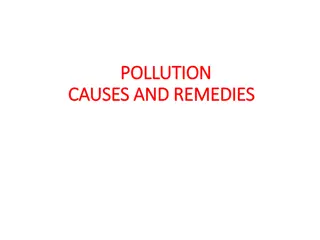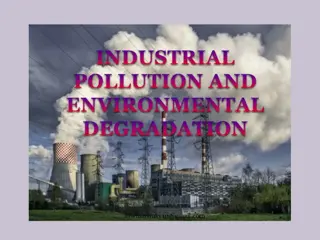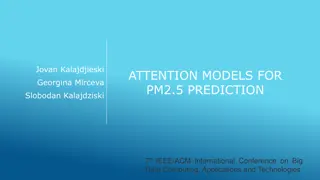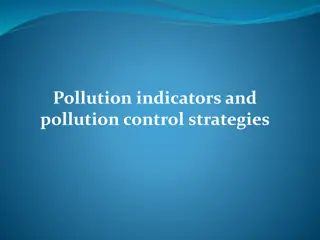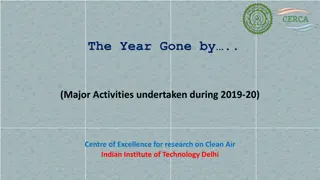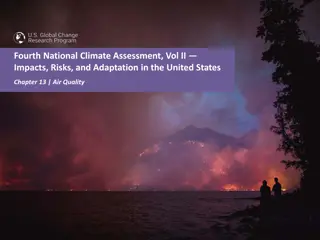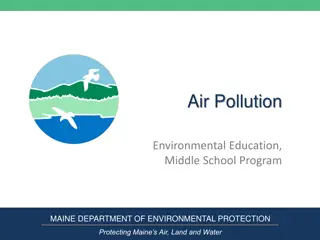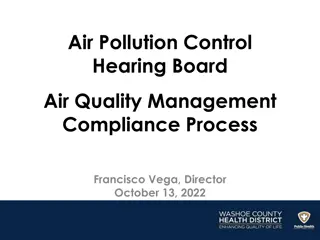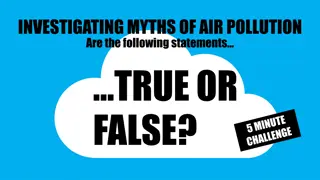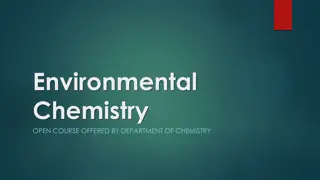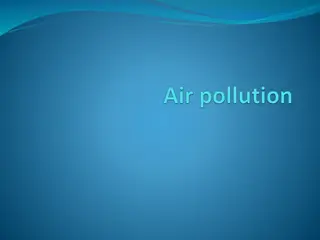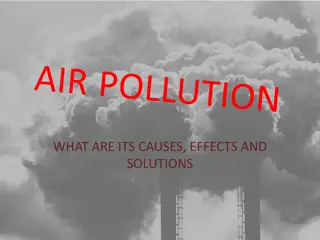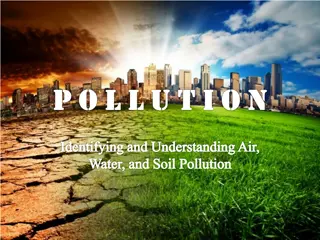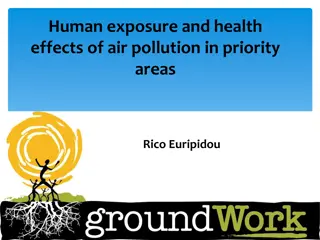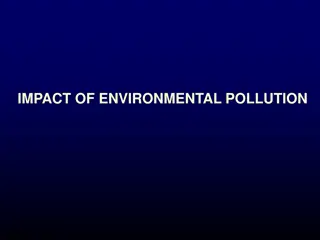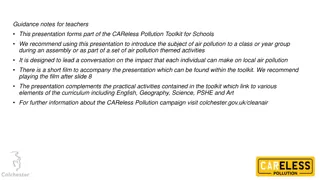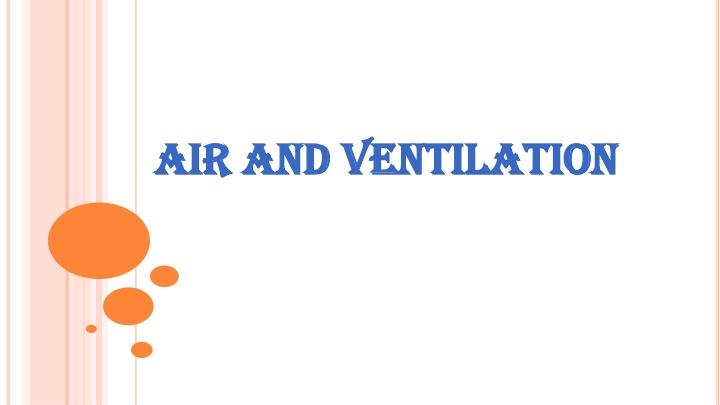
Air Pollution and Ventilation Practices
Learn about air pollution sources, prevention, and control, along with the importance of ventilation for healthier indoor environments. Explore self-cleansing mechanisms in nature and the effects of air pollution on human health.
Download Presentation

Please find below an Image/Link to download the presentation.
The content on the website is provided AS IS for your information and personal use only. It may not be sold, licensed, or shared on other websites without obtaining consent from the author. If you encounter any issues during the download, it is possible that the publisher has removed the file from their server.
You are allowed to download the files provided on this website for personal or commercial use, subject to the condition that they are used lawfully. All files are the property of their respective owners.
The content on the website is provided AS IS for your information and personal use only. It may not be sold, licensed, or shared on other websites without obtaining consent from the author.
E N D
Presentation Transcript
AIR AND VENTILATION AIR AND VENTILATION
OBJECTIVES Central objective At the end of the class students will gain knowledge on air pollution and able to apply this knowledge in practice with positive attitude Specific objective Students will be able to Define air pollution List down the sources of air pollution Describe the prevention and control of air pollution
AIR AIR
IMPURE AIR
(1) Respiration of men and animals (2) Combustion of coal, gas, oil, etc. (3) Decomposition of organic matter and (4) Trade, traffic and manufacturing processes which give off dust, fumes, vapours and gases.
Air is cleaned by certain self-cleansing mechanisms which operate in nature (1) Wind: Wind dilutes and sweeps away the impurities by its movement. Because of wind movement, impurities did-not accumulate in any one place; (2) Sunlight : The atmospheric temperature and sunlight play their own part by oxidizing impurities, and killing bacteria (3) Rain : It cleanses the atmosphere by removing the suspended and gaseous impurities (4) Plant life : The green plants utilize the carbon dioxide and generate oxygen
DISCOMFORT Discomfort is a subjective sensation which people experience in ill-ventilated and crowded rooms. For a long time it was believed to be due to increased carbon dioxide and decreased oxygen, resulting from respiration.
Air Pollution Air said to be polluted when physical and biological agents are present in it to such an extent that they become harmful to man. Pollution of external atmosphere by chemical agents and smoke is a growing menace in large industrial towns. More than 100 pollutants arising from different sources are added into the air every day. Basic definition Air pollutants may be either emitted into the atmosphere or formed within the atmosphere itself.
Primary air pollutants Primary air pollutants are those that are emitted into the atmosphere from a source such as a factory chimney or exhaust pipe, or through suspension of contaminated dusts by the wind. Secondary air pollutants Secondary air pollutants are those formed within the atmosphere itself. They arise from chemical reactions of primary pollutants, possibly involving the natural components of the atmosphere, especially oxygen and water..
Gaseous air pollutants Gaseous air pollutants are those present as gases or vapours, Gaseous air pollutants are readily taken into the human respiratory system, although if water-soluble, they may very quickly be deposited in the upper respiratory tract and not penetrate to the deep lung. Particulate air pollutants Particulate air pollutants comprise material in solid or liquid phase suspended in the atmosphere. Such particles can be either primary or secondary and cover a wide range of sizes.
1.AUTOMOBILES Motor vehicles are a major source of air pollution throughout the urban areas. They emit hydrocarbons, carbon monoxide, lead, nitrogen oxides and particulate matter. In strong sunlight, certain of these hydrocarbons and oxides of nitrogen may be converted in the atmosphere into "photochemical" pollutants of oxidizing nature. In addition, diesel engines, when misused or badly adjusted are capable of emitting black smoke and malodorous fumes.
2.INDUSTRIES Industries emit large amounts of pollutants into the atmosphere. Combustion of fuel to generate heat and power produces smoke, sulphur dioxide, nitrogen oxides and fly ash. Petrochemical industries generate hydrogen fluoride, hydrochloric acid and organic halides. Many industries discharge carbon monoxide, carbon dioxide, ozone, hydrogen sulphide and sulphur dioxide. Industries discharge their wastes from high chimneys at high temperature and high speed.
3.DOMESTIC SOURCES Domestic combustion of coal, wood or oil is a major source of smoke, dust, sulphur dioxide and nitrogen oxides. 4.SMOKE The most direct and important source of air pollution affecting the health of many people is tobacco smoke.
PREVENTION AND CONTROL PREVENTION AND CONTROL OF AIR POLLUTION OF AIR POLLUTION
1.Containment That is, prevention of escape of toxic substances into the ambient air. Containment can be achieved by a variety of engineering methods such as enclosure, ventilation and air cleaning. A major contribution in this field is the development of "arresters" for the removal of contaminants. 2.Replacement That is, replacing a technological process causing air pollution, by a new process that does not. Increased use of electricity, solar power generation, natural gas, and central heating in place of coal have greatly helped in smoke reduction.
3. Dilution Dilution is valid so long as it is within the self -cleaning capacity of the environment. For example, some air pollutants are readily removed by vegetation. The establishment of "green belts" between industrial and residential areas is an attempt at dilution.
4.Legislation Air pollution is controlled in many countries by suitable legislation, e.g., Clean Air Acts. Legislation covers such matters as height of chimneys, powers to local authorities to carry out investigations, research and education concerning air pollution, creation of smokeless zones and enforcement of standard for ambient air quality. To decrease the nuisance of air pollution, the Government of India have enacted "The Air (Prevention and Control of Pollution) Act" in 1981
5.International action To deal with air pollution on a world-wide scale, the WHO has established an international network of laboratories for the monitoring and study of air pollution. The network consists of two international centres at London and Washington, three centres at Moscow, Nagpur and Tokyo and 20 laboratories in various parts of the world . These centres will issue warnings of air pollution where and when necessary.
ASSIGNMENT Write a note on role of community health nurse in prevention and management of air pollution
Reference K.PARK, (2008) Essential Of Community Health Nursing , Banarsidas Bhanot Publishers, 26th edition. NEELAM KUMARI,(2011) A textbook of community health nursing II First Edition, S vikas & Company Medical publisher.

